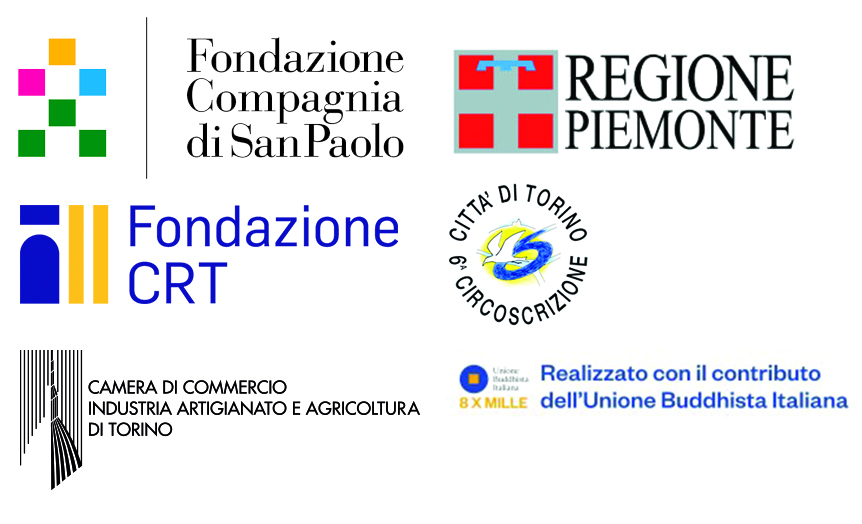Ferruccio D’Angelo was born in 1953. He lives and works in Cambiano (To)
In the second half of the 80s, up to the early 90s, the Italian art of the last generation carries out an intelligent reinterpretation of the formal stereotypes of the twentieth-century avant-garde, from the historical ones to the closest ones in time, including pop and conceptual, with a multi-stylism that still saw painting prevail in those years, then installation and abstract-geometric proposals, seasoned with a good dose of shrewd irony and a necessary immersion in the frenetic climate of post modernity. In that period the artistic project of Ferruccio D’Angelo was formed and took shape, which is placed within a line of renewal of the language of sculpture and installation in relation to both the now outdated canons of avant-garde monumentalism , which of those at the time of the breaking of Arte Povera. However, it is from that layout that the work of D’Angelo initially draws inspiration, who does not accept, however, formal and even less psychological subjection. In fact, the possible and idealized relationship between artifice, understood as technology, and nature, was inverted by D’Angelo in terms, with a clear formal predominance of the former, in a symbolic sense, over the latter. The recycled bins, painted monochromatically with blue and black acrylic tempera and other paints, represent, despite the initial idea, an overcoming of the classical themes of the conceptual installation, aimed in the direction of a provocative functionalism close to the most recent forms of design, such as in the case of the large chairs that were the subject of a solo show in Piero Cavellini’s gallery in Milan in 1991 and then re-proposed, always with success, on various other occasions over the years. Even when the object of the proposal is the evocation of nature, as in the case of tree trunks and other similar visual solutions, the result is that of a formally rigorous image, like a minimalism updated to our days, but at the same time playful, like the absolute artifice typical of the main exponents of Italian pop objectualism, such as Gilardi and, above all, Pascali.
Overall, the style of the 90s up to this central phase of the new millennium has maintained some characteristics of the previous decade unchanged, with some significant variations, both sociological and formal, more and more marked and evident in recent years. For the first aspect, the full entry into post-industrial society, marked by an ever wider invasiveness of new technologies, has considerably increased, also in response to a real social need, the number of those who engage in aesthetic activities. On the other hand, the growing immateriality, if not artificiality, of our daily life has generated two opposite reactions. On the one hand an approach, in the worst cases a flattening, of art to reality, on the other a detachment, a refuge in the territories of allegory and symbol. The installation has increasingly moved into the territories of objectualism, painting has maintained its centrality, and the use of photography and video has experienced great success. Ferruccio D’Angelo, in the waves of this chaotic sea, has kept the tiller steady, directing his style towards safe landing places. The passion for installation remained constant, but other streets were also explored,
in keeping with his wisely eclectic spirit. First the photography, in color and black and white, in which the installations themselves were reproduced, with an ambiguous and alienating final result. Subsequently with the proposal of interior sculptures, even closer to the universe of stylism and design, and faith makes her participation in various international exhibitions dedicated to the contamination between visual art and its various functional applications. In recent years, the artist has allowed himself a break of prevailing interest, with excellent results from an aesthetic point of view, towards a painting where fidelity to the previous minimal dimension was only partially maintained. On the contrary, we could, if anything, speak of a sort of “postmodern baroque”, of a theatricality and redundancy of the contextualized image, however, in a present dimension. Proof nor is the “secondary” appeal to technology, in particular for the frames of television and advertising images which were not, however, projected on the canvas using the photographic tracing but were reinvented iconographically with a gradual modification of the tones, produced with colors oil and a practice, from an exquisitely formal point of view, faithful to the classical canons. In the last period D’Angelo experienced a phase of great ferment and creative happiness also supported by an increasingly concrete recognition of his artistic merits, given this which unites him to the urgent and not postponable need for historicization of the generation of the 80s which he is certainly one of the most significant exponents. Keeping his production of both monumental and smaller-scale installations constant, in recent works D’Angelo has returned to his old predilection for the use of spherical object finds, plasticized lids, recycled materials which he ennobles with a dry and rigorous but with decidedly warmer tones than a few years ago. Traces of lines and densities of color that echo the aniconic calligraphy tradition of the European and Asian Informal, but also the pulsating rhythms of urban graffiti, with a final result of immanent relevance.
Edoardo Di Mauro



